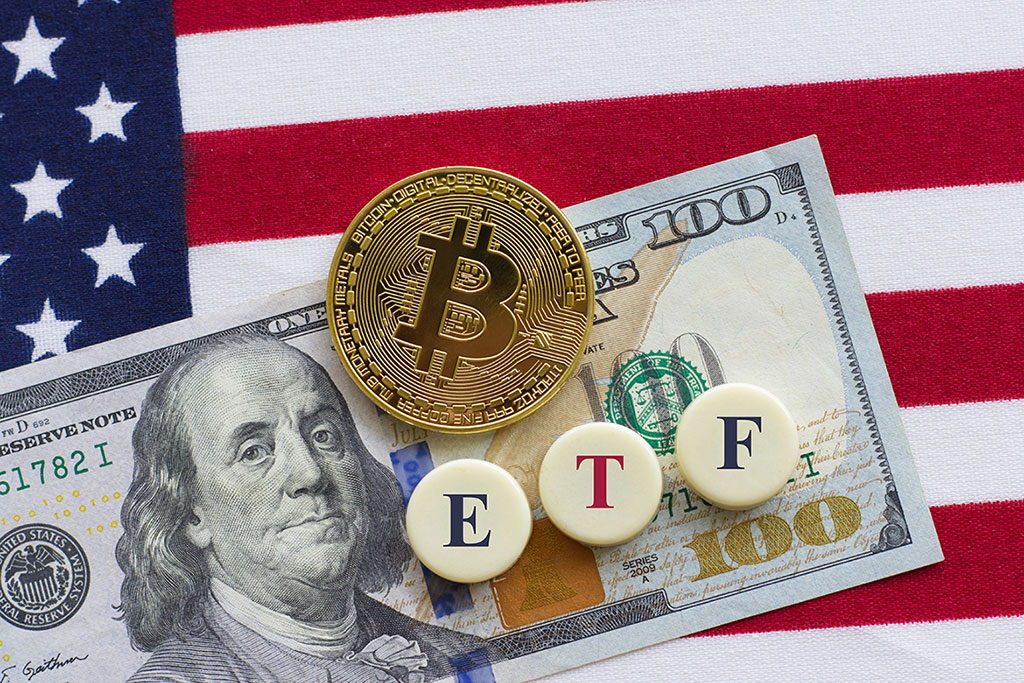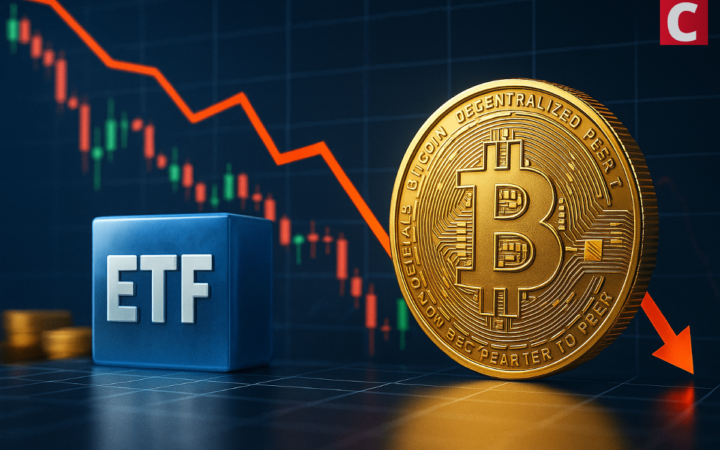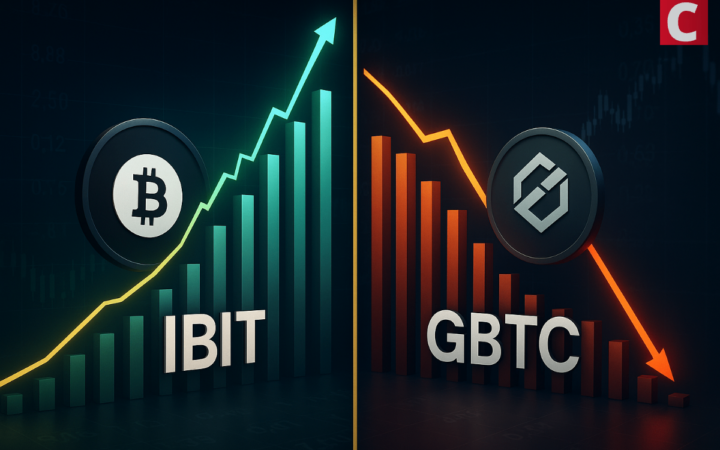
With over 3 years of crypto writing experience, Bena strives to make crypto, blockchain, Web3, and fintech accessible to all. Beyond cryptocurrencies, Bena also enjoys reading books in her spare time.
The much-anticipated Bitcoin halving event on April 20 was expected to trigger a price surge but failed to deliver the anticipated impact. Instead, Bitcoin saw a subsequent 15% drop.
 Edited by Julia Sakovich
Updated
3 mins read
Edited by Julia Sakovich
Updated
3 mins read

Fidelity’s spot Bitcoin ETF (FBTC), a highly anticipated Bitcoin investment fund, appears to face a challenge. After launching in January 2024, the fund saw its first day of net outflows on Thursday. According to data from SoSoValues, the daily net outflow amounted to $22.61 million, signaling a shift in investor sentiment toward Bitcoin, the world’s leading cryptocurrency.
The outflow streak comes amidst a broader pullback in the cryptocurrency market. Several other US Bitcoin funds reported significant outflows, amounting to a combined $217.58 million net outflow on Thursday. Grayscale Bitcoin Trust ETF (GBTC) experienced the most substantial outflow, losing $139.37 million.
Meanwhile, Ark 21Shares Bitcoin ETF (ARKB) witnessed $31.34 million in outflows. Additionally, Valkyrie and Bitwise experienced negative net flows of $20.16 million and $6 million, respectively. The recent trend of negative outflow reflects a broader trend of investors exiting cryptocurrency investments amidst market volatility.
However, Franklin Templeton’s EZBC fund attracted $1.87 million in new investments on Thursday. Notably, BlackRock’s IBIT fund, which had experienced an impressive 71-day streak of positive inflows, received zero net new funds on both Wednesday and Thursday. While this might raise concerns, Bloomberg ETF Analyst James Seyffart clarifies that zero inflows are not uncommon occurrences for ETFs.
Despite BlackRock’s IBIT receiving a net inflow of $1.5 billion in April, marking positive overall performance, broader market sentiment shows potential crypto market fatigue. The initial excitement surrounding various Bitcoin ETF launches, which drove the cryptocurrency to a record high nearing $74,000 on March 14, seems to be diminishing.
The highly-awaited Bitcoin halving on April 20th was expected to drive a spike in prices, but it did not yield the anticipated impact. Instead, Bitcoin saw a subsequent 15% drop. Experts suggest this decline, combined with the lack of major events that could reignite investor interest, contributes to the current outflow trend.
Fund inflows were essentially non-existent after the Bitcoin halving event, as Hong Song-uk, an analyst at NH Investment and Securities, stated in a recent report. He further explained there are no imminent occurrences that draw attention to Bitcoin in the near future.
According to CoinMarketCap, Bitcoin is currently trading at $64,400. Coinglass statistics show roughly $167 million in Bitcoin liquidations over the past 24 hours, with $106 million being long positions, highlighting Bitcoin’s liquidity and global trading activity across several exchanges.
Despite the recent outflows and market correction, the emergence of Bitcoin ETFs has undoubtedly had a significant impact on the cryptocurrency market. With an estimated $54 billion invested across various vehicles, these ETFs have attracted a new wave of investors, including institutional players.
The launch of Bitcoin and Ether ETFs in Hong Kong further underscores the growing global interest in cryptocurrencies and the potential expansion of investment opportunities in new markets.
While the short-term outlook for Bitcoin might be experiencing some turbulence, the long-term potential of the asset class remains promising. The underlying technology and its applications continue to evolve, attracting investment and development across various sectors.
As the regulatory landscape matures and institutional adoption increases, Bitcoin’s future trajectory is likely to be shaped by a confluence of factors beyond short-term market sentiment.
Disclaimer: Coinspeaker is committed to providing unbiased and transparent reporting. This article aims to deliver accurate and timely information but should not be taken as financial or investment advice. Since market conditions can change rapidly, we encourage you to verify information on your own and consult with a professional before making any decisions based on this content.

With over 3 years of crypto writing experience, Bena strives to make crypto, blockchain, Web3, and fintech accessible to all. Beyond cryptocurrencies, Bena also enjoys reading books in her spare time.





